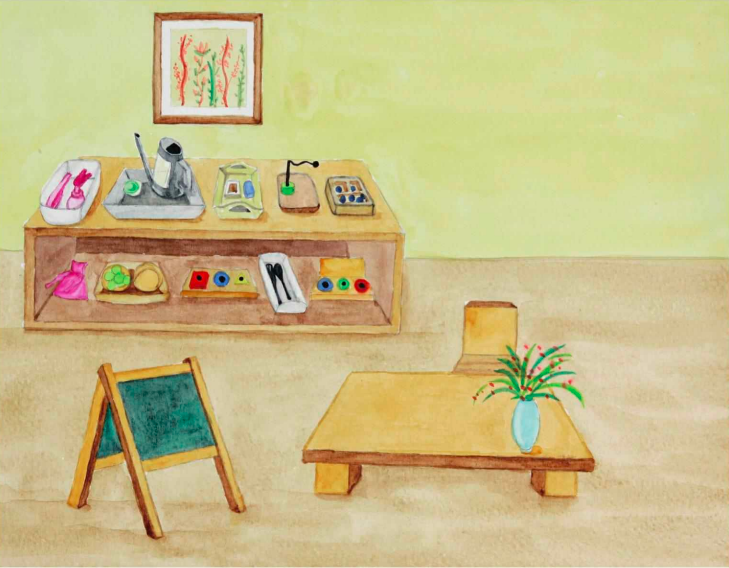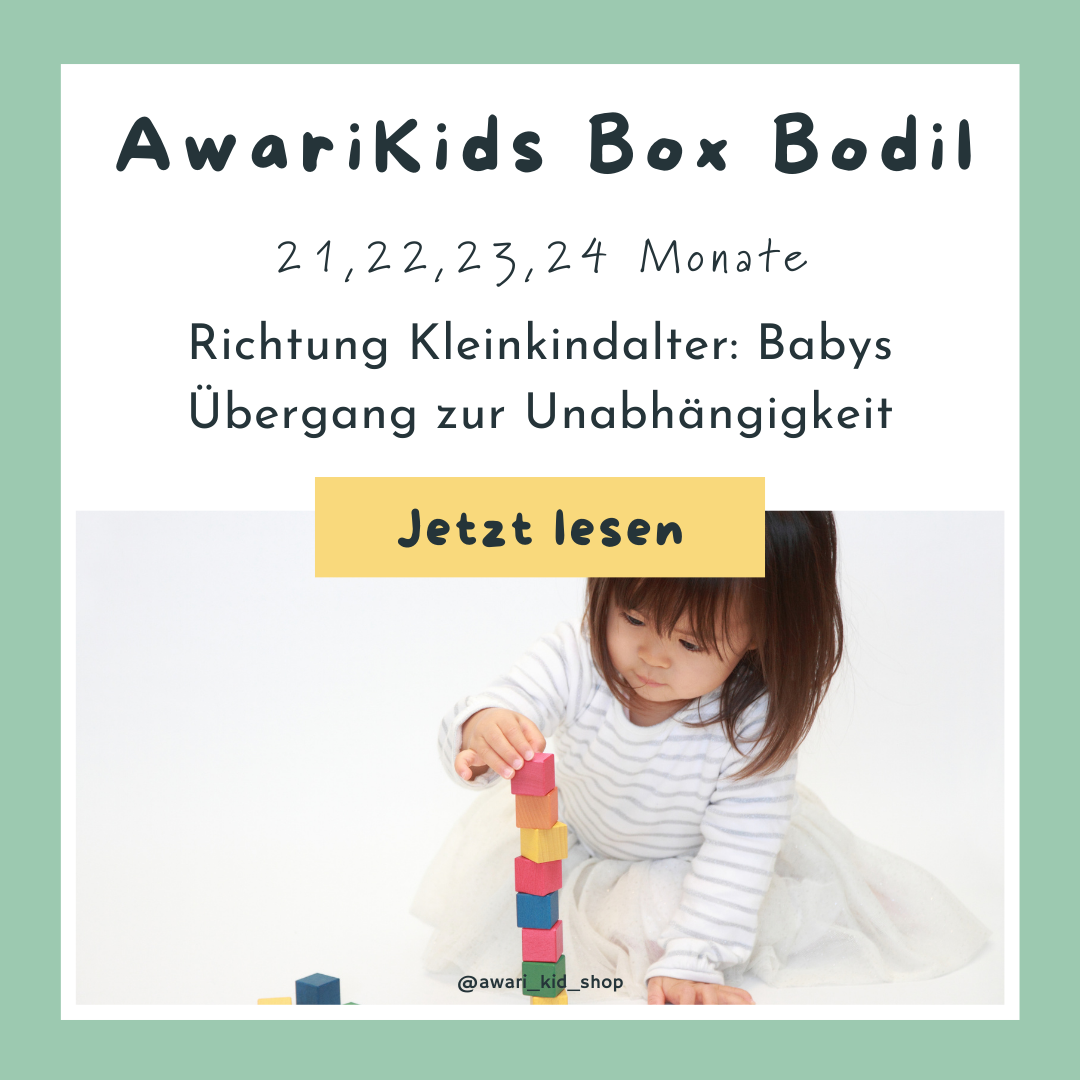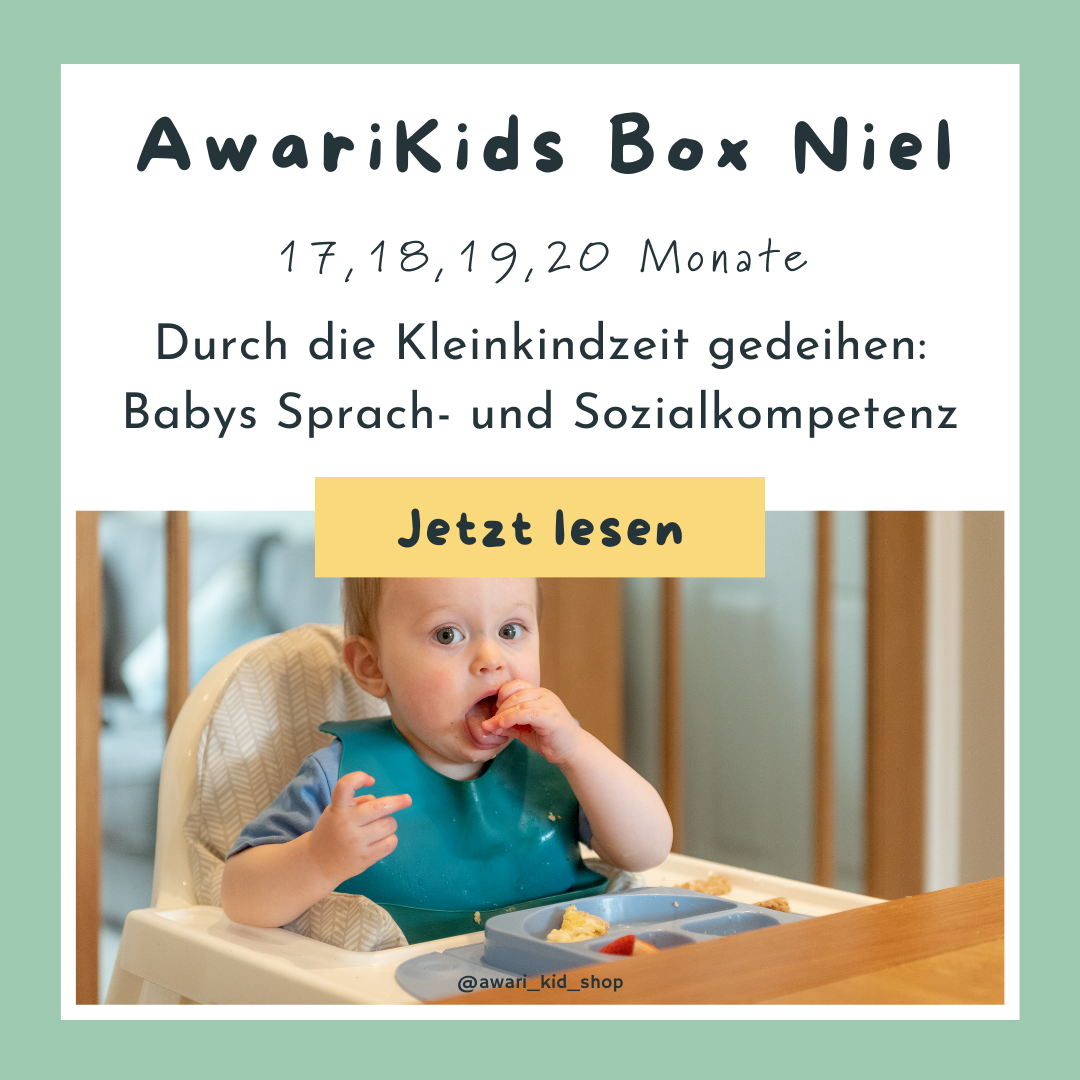
From the age of 1, children perform more complex hand movements, so we can prepare a low cabinet in the living room of the house with teaching tools to help them with hand-eye coordination and fine hand movements, such as: E.g.: working with clothes frames, screws, opening and closing bottle caps, threading wooden beads, paste work, cutting work, etc. If it is possible, you can set up a table in the living room for your child to work at. You can also set up a book corner in the living room, making sure that the books on the shelves are visible to the child on the cover, which tempts the child to look at them. The area should be as well lit as possible.
Once the child can walk and is integrated into family life, they learn to take care of themselves and their surroundings, to prepare their own food and to move objects.
In the field of self-care, we can prepare a wardrobe in the children's room with all the clothes that the child needs. However, it is important that you only choose 2 items. Since children at this stage want to be independent but are not yet able to do so, giving them too many choices can stunt their development. The two choices are determined by the adults, so there are no problems and the child can decide for themselves what clothes to wear, what food to eat, etc. A stool can also be placed in the closet for the child to get dressed on . In the bathroom we need a potty or a child's toilet seat. There should also be a training pants closet or drawer so the child can get their own clean pants. There should also be a small dirty clothes basket for the child to put their own dirty clothes in. We can also add a small stool so the child can reach the sink. We can put a towel in a low place, a small bar of soap, and then a toothbrush without toothpaste. Adjust the hot water temperature to a safe level and show him how to turn on the cold water faucet first. Set up a mirror at an appropriate height. All these things help the child to take care of themselves and to develop a good level of independence. As a teaching tool, we can provide a clothes frame for the child to learn to put on and take off their clothes and shoes. Put a low hook at the entrance of the door where the child's clothes can be hung and a place to put the shoes or boots, and when the shoes are dirty you can put a tray under them. In this way, the mud from the shoes falls into the bowl without soiling the floor of the house.
When it comes to caring for the environment, your child has watched their mother clean every day since they could no longer walk, and if they are able, they want to try too. Here we can provide him with a broom, feather duster, mop, etc. suitable for his size and let him clean. He can also be provided with teaching tools in his size to clean the glass, wash the dishes, wash the cloths, water the flowers, feed the animals, clear the dishes, etc.

Food preparation is a special job and is listed separately here because it involves both caring for others and caring for oneself, and is also a reflection of the country's culture. In the kitchen we give the children a special drawer with all the items that they use themselves. Place placemats, napkins, crockery, cups, etc. within easy reach so they can set the table themselves. The same goes for the fridge: put the food within reach for the kids so they can access it themselves. A stool can be placed next to the sink so that the child can wash the dishes.
These daily activities provide great sensory stimulation, provide additional language input and expand the child's vocabulary, improve eye-hand coordination, develop math logic, and make the child independent and confident.
In the garden we can provide you with garden tools for planting and you can look after and feed the animals.
An art space can also be prepared at home. In this session we will look at the process of making art rather than the finished product. When designing, they train eye-hand coordination and hand strength and express themselves. We cannot teach a child to be an artist, but we can help them have eyes to explore, hands to control, and a soul to feel. The materials for the art room must be safe, non-toxic and fit in the palm of your child. When we buy products, we need to pay close attention to whether the ingredients are safe.
area music. We can also prepare some musical instruments for the child to play on the counter. Develop your child's sense of music.
Click on the Linkto discover the Montessori material that our educators create for children at this stage.
Source:
- The Montessori Baby: A Parent's Guide to Nurturing Your Baby by Junnifa Uzodike and Simone Davies
- the book The Absorbent Mind Book by Maria Montessori
- Montessori from the Beginning: The Child at Home, from Birth to Age Three by Lynn Lillard Jessen and Paula Polk Lillard



